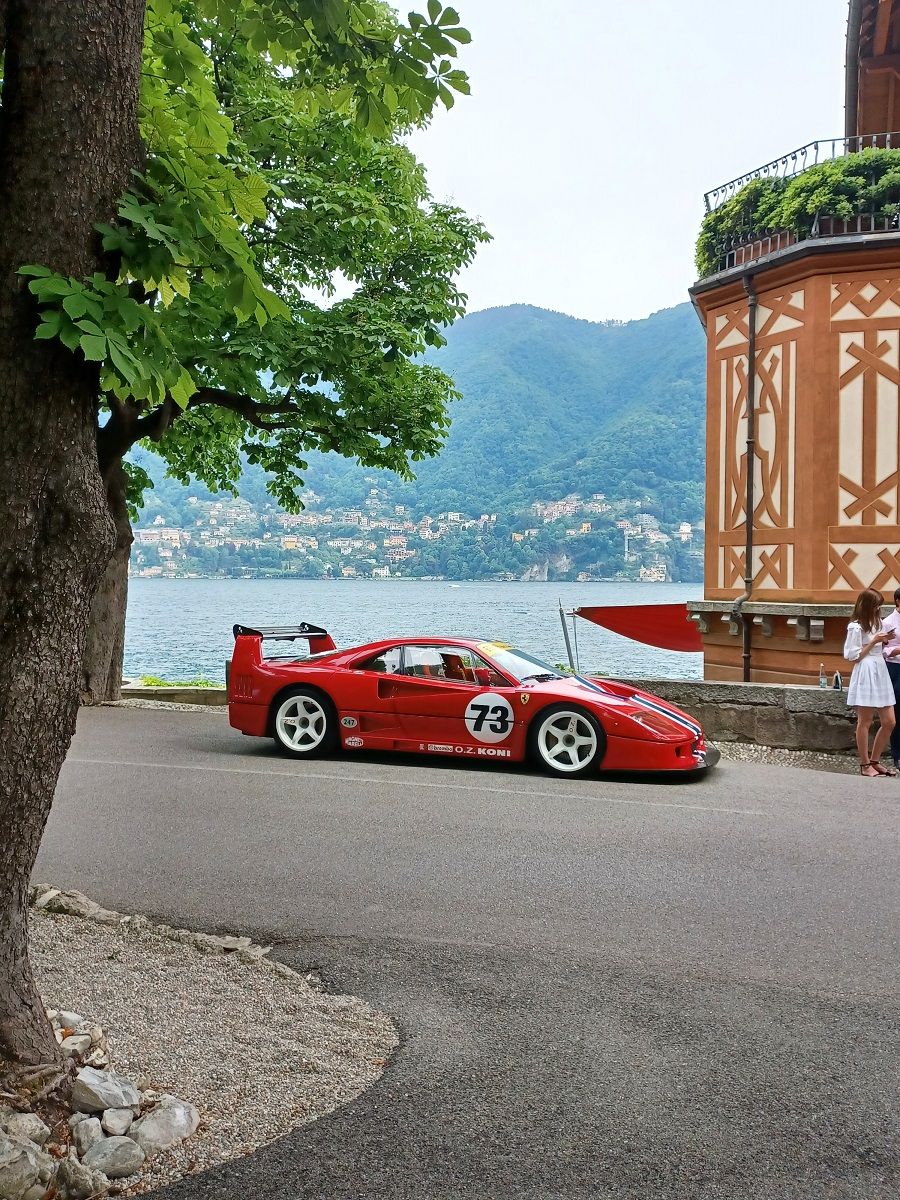When Porsche Came Up With The 959 And Ferrari Responded With The F40
Images: Gautam Sen
When the management at Porsche decided to transform its Group B rally car into a street-legal supercar, it chose to retain the 2.8-litres flat-six boxer engine of the 911. In its base version, this engine developed a rather modest 160bhp; but when the engineers at Porsche bolted on two KKK turbos, maximum power was boosted all the way up to 450bhp, for a car that weighed just 1,450kg.

The engine, located at the rear like all 911s, was mated to a six-speed gearbox and drive was to all four wheels, with Porsche developing a complex, but very effective, electronically controlled system that apportioned torque depending on need, thereby making the car much easier to handle than the traditional oversteering-at-the-limit 911s of the past.

The all-wheel-drive system featured a four-mode electronic splitter which increased the weight of the vehicle, but provided exceptional handling. Depending on the driving conditions, the power increased from 50 to up to 80% to the rear wheels.

With excellent grip, brilliant handling and class-leading power-to-weight ratio, the performance figures of the 959 were astounding for the period: the 0–100 km/h acceleration time was just 3.7 seconds, with 200 coming up in 13.3 seconds. With a maximum speed of 317 km/h, the Porsche 959 was crowned the fastest car in the world at the time.

Until the arrival of the 959, the race for the ‘fastest car in the world’ title was mainly between Lamborghini and Ferrari, between the Miura and the Daytona, the Countach and the Berlinetta Boxer, and their derivatives. The launch of the Porsche 959 in 1986 changed the equation completely. Very well-equipped, the 959 featured power steering, an on-board computer, leather seats, and other luxuries.
Despite a staggering price of DM 420,000 (€259,163), 292 of the 959s were sold by spring 1988. Counting prototypes, pre-production models and a final run of eight more built from spare parts remaining during 1992–1993, a total of 345 Porsche 959s were manufactured eventually.

The media and sales success of the Porsche 959 prompted Ferrari to join the power race with the F40, a supercar which was much more ‘traditional’ in its approach to technology. In 1984, under the engineering leadership of Nicola Materazzi—who had earned his spurs developing the racing version of the legendary Lancia Stratos and the Ferrari 288 GTO—Enzo Ferrari signed off on a development programme to design an evolution of the 288 GTO, to compete with the Porsche 959 in Group B, as well as celebrate the 40th anniversary of the founding of Ferrari.

Unveiled in 1987, the Ferrari F40 followed Enzo Ferrari’s design philosophy of pushing the limits of automotive engineering without resorting to technological aids to ‘assist’ the drivability of the car.
It was more important to contain weight, and to do so the F40 was the first road car in Ferrari’s history to be built with various composite materials such as Kevlar for some of the chassis sections, fibreglass for the bodywork, Plexiglas for the rear window, and the fuel tanks were in aerospace resins.

To keep weight down to under a targeted 1.3 tonnes, Materazzi followed the concept of minimalism, arrived at by lightening every aspect of the car to the maximum. Thus, the cabin was deliberately spartan, with very basic bucket seats, and with all features for comfort reduced to a minimum, except for air-conditioning.

The ‘empty’ trim-less doors weighed a bare 1.5kg. To open the door from the inside, there was a simple cable instead of a handle. Not surprisingly, the F40 did not have power steering, ABS, or any other form of driver aid. On the aerodynamic front, the F40 managed a drag coefficient (Cx) of 0.34, thanks to its retractable headlamps and the imposing rear wing.

The 90-degree V8 powering the F40, the F120D engine, was an evolution of that used in the preceding model, the Ferrari 288 GTO, and was a direct descendant of the Dino’s V8. With a capacity of 2936cc, and featuring double overhead camshafts per bank of cylinders, as well as four valves per cylinder, the engine was blown upon by a pair of Japanese IHI intercooled turbochargers, with the F40 developing a maximum power figure of 471bhp, some twenty-one horse power more than the 959.

Despite a better power-to-weight ratio than the 959, the F40’s 0–100 km/h acceleration figure, at 3.9 seconds, was poorer as it did not have the benefit of the Porsche’s four-wheel-drive system which gave the German car better traction at take-off. The F40 did manage a higher top speed of 324 km/h, making it the fastest series production car built until then, thereby wresting the crown from the 959.

With such promising performance and a Ferrari badge, the initial planned production run of 400 cars sold out quickly. At the same time, the punters joined in as demand remained very high, with cars selling for a premium months after they had left the factory (at a sticker price of US$400,000). With such strong demand, Ferrari carried on producing the F40 well beyond the planned 400, with production ending eventually in 1992 after over 1,300 cars had been built.
Today, both these cars are much coveted as truly historic vehicles.
Comments
Sign in or become a deRivaz & Ives member to join the conversation.
Just enter your email below to get a log in link.
